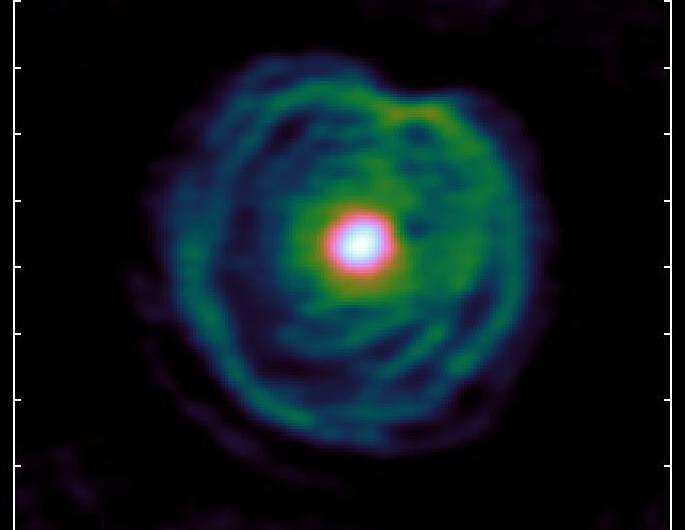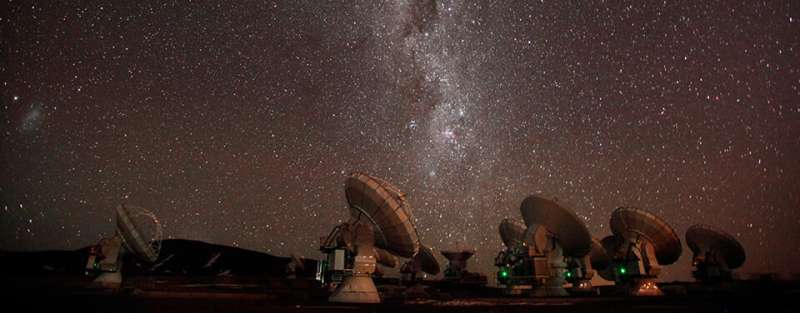Stellar wind of old stars reveals existence of a partner

Red giants are old stars that eject gaseous material and solid particles through a stellar wind. Some red giants appeared to lose an exceptionally large amount of mass this way. However, new observations reveal that this is not quite the case. The stellar wind is not more intense than normal, but is affected by a partner that was overlooked until now—a second star that circles the red giant. These are the results of an international study led by Belgian university KU Leuven.
Humans don't live long enough to observe it, but stars are born, they age, and they die. It's a process that takes billions of years. As a star gets older, it becomes bigger, colder and redder—hence the name red giants. Our sun will also become such a red giant in 4.5 billion years.
In the final stage of their lives, red giants eject their mass—gas and other matter—in the form of a stellar wind. Earlier observations have confirmed that red giants lose a lot of mass this way. Twelve mass-loss rate record holders in particular have baffled scientists for decades. These red giants supposedly eject the equivalent of 100 Earths per year for 100 to 2000 years on end. Even astronomically speaking, that's a lot of matter in a short amount of time.
This was difficult to explain, says Professor Leen Decin from the KU Leuven Institute of Astronomy: "If you look at the mass of such a star in the next phase of its life, the intense stellar wind doesn't last long enough to account for the mass loss that we've seen. It was also statistically improbable that we had discovered 12 of these red giants, knowing that what we were seeing was a phase that lasted only hundreds or thousands of years compared with their billion-year-long life. It's like finding a needle in a haystack 12 times."

New observations from the ALMA telescope in Chile shed light on what was happening with two of these red giants. "For these stars, the stellar wind forms a spiral. It's an indirect indication that the red giant is not alone, but part of a binary star system. The red giant is the main star with a second star circling it. Both stars affect each other and their environment gravitationally in two ways: On the one hand, the stellar wind is pulled in the direction of the second star, and on the other hand, the red giant itself also wiggles slightly. These movements give the stellar wind a spiral shape."
The discovery of a partner star made everything fall into place, says Decin: "We believed that these red giants were record holders for mass-loss rate, but that's not the case. It only seemed as though they were losing a lot of mass because there's an area between the two stars where the stellar wind is much more concentrated due to the gravity of the second star. These red giants don't lose the equivalent of 100 Earths per year, but rather 10 of them—just like the regular red giants. As such, they also die a bit more slowly than we first assumed. To rephrase in a positive way: These old stars live longer than we thought."
The astronomers are now investigating whether a system with a binary star could also be the explanation for other special red giants. "We believed that many stars lived alone, but we will probably have to adjust this idea. A star with a partner is likely to be more common than we thought," Decin concludes.
The study is published in Nature Astronomy.
More information: Reduction of the maximum mass-loss rate of OH/IR stars due to unnoticed binary interaction, Nature Astronomy (2019). DOI: 10.1038/s41550-019-0703-5 , www.nature.com/articles/s41550-019-0703-5
Journal information: Nature Astronomy
Provided by KU Leuven





















